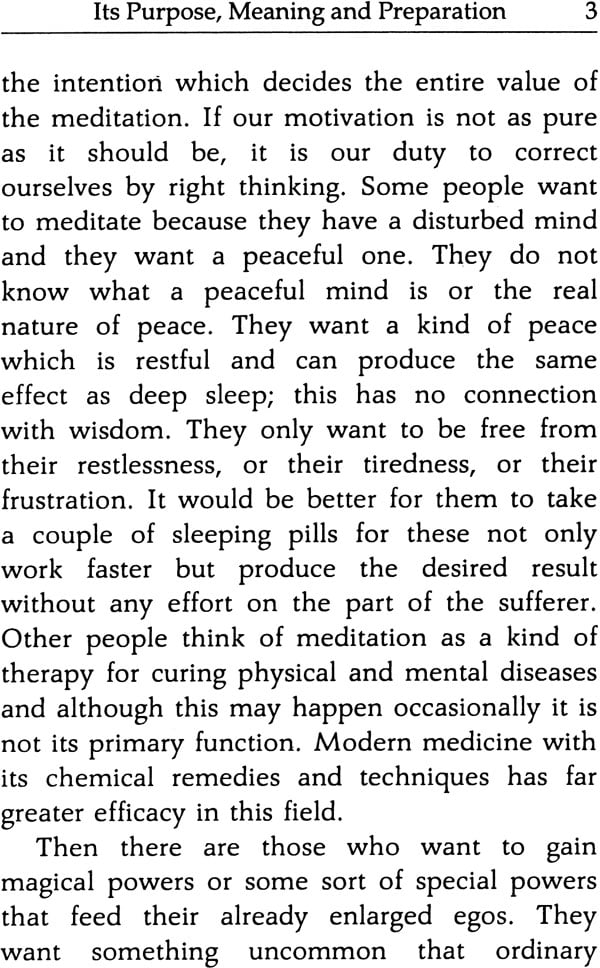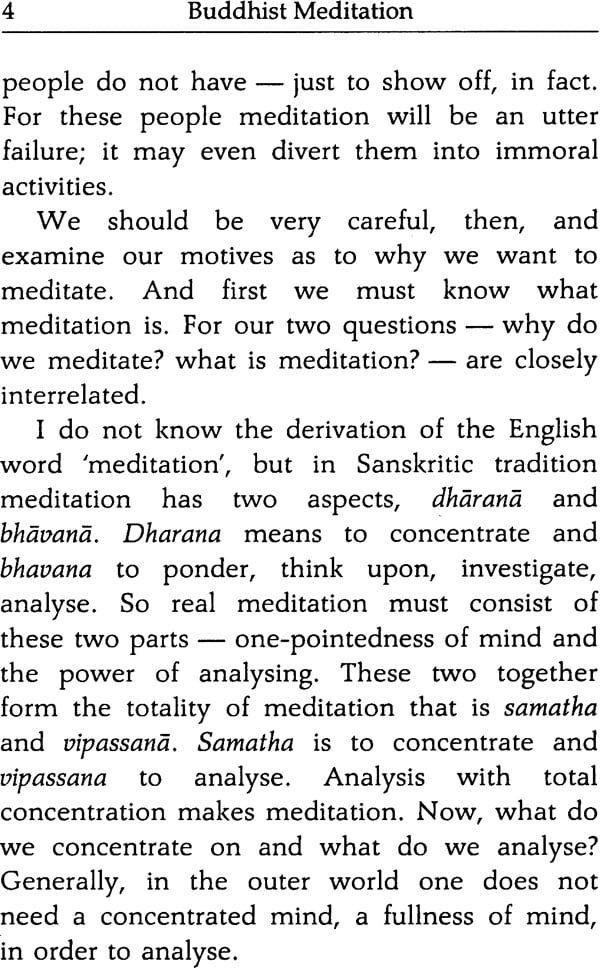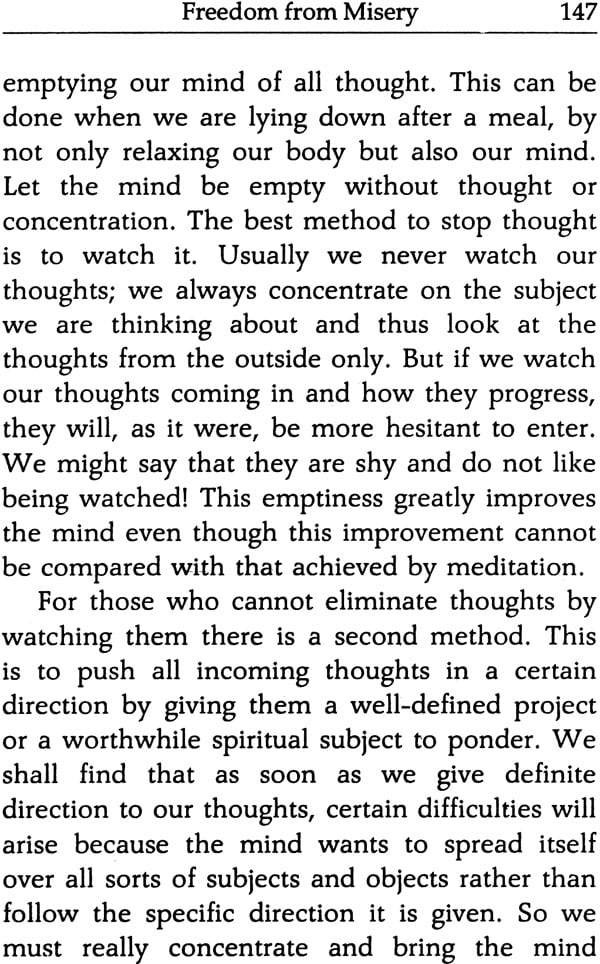
Buddhist Meditation
Book Specification
| Item Code: | NAH295 |
| Author: | Samdhong Rinpoche |
| Publisher: | Theosophical Publishing House |
| Language: | English |
| Edition: | 2007 |
| ISBN: | 9788170594536 |
| Pages: | 182 |
| Cover: | hardcover |
| Other Details | 7.0 inch X 5.0 inch |
| Weight | 200 gm |
Book Description
Back of the Book
Venerable Professor Samdhong Rinpoche was born in Eastern Tibet and arrived in India with His Holiness The Dalai Lama. He is a distinguished Tibetan scholar, the first democratically elected Prime Minister of the Tibetan Government in exile and the former Director of the Central Institute of Higher Tibetan Studies in Sarnath, Varanasi.
This book consists of a series of talks given to a group of international students at The School of the Wisdom at the Theosophical Society headquarters in Chennai.
Foreword
Samdhong Rinpoche is the head of the Central Institute of Higher Tibetan Studies at Varanasi. From infancy, he was given the rigorous religious and philosophical training suitable for an incarnated lama in Tibet. He came to India in the retinue of His Holiness the Dalai Lama in 1959 when the Chinese occupied his country.
This little book is based on a series of talks given to students at the School of the Wisdom at Adyar in 1982. It soon became evident to those who heard them that the speaker was sharing his own deep experiences of meditation without in any way wishing to impose his own preferences and views on others. There was an atmosphere of simplicity, and indeed of contemplation, that did more, perhaps, to convey the spirit of meditation than the words alone could accomplish. Editing of the material has been kept to a minimum in the hope that readers will catch something of the same atmosphere and be inspired to go deeper into this important subject.
We wish to express our special thanks to Miss Carin Citroen for her patience and care in transcribing and typing the talks, and for designing the cover.
Contents
| Foreword | ix | |
| I. | Meditation: Its Purpose, Meaning, and Preparations | 1 |
| Why meditate? - What is meditation? - Meditation methods: Samatha and Vipassana - Steps in meditation: concentration, thinking, pondering, and’ analysing - Buddhism, Karma, and the Three Doctrines - Preparation: study, ponder and meditate - Conditions - Reviewing one’s life - Meditation retreats- Q’s and A’s: Analysis; Pranayama and mantras | ||
| II. | Tibetan Meditation Schools, The Noble Eightfold Path and Postures | 20 |
| Mahayana Buddhism: Vijnana-vada and Madhyamika Schools - Asanga and Nagarjuna - Preparation stages and discipline methods: Discipline of body, speech and mind - The Noble Eightfold Path: Right intention; right livelihood; right speech; and right action - Quiet surroundings and spiritual music - Postures: Straight spine; normal breath; eyes; concentration on breathing - Pure living - Q’sandA’s: Asanga and Nagarjuna - The eyes - Environment for meditation - Truthful speech | ||
| III. | Object and Methods of Concentration | 43 |
| Choosing an object for concentration: Inside the body (mind and breathing); Outside the body (sound and forms). Exercises in and process of concentration: Relative and absolute truth; conditioned and scattered mind; breathing. Q’s and A’s: Will-power; Pure perception, mind and thought; The brain and the mind; Clothes | ||
| IV. | Obstacles to Concentration and Preventive Measures | 67 |
| Distractions of the mind - Sinking of the mind - Preventive measures: Recollection and recognition - Subtle versions of distractions and sinking mind - Requirements for progress in meditation - Strict routine - Variations to the routine - Changing object of concentration- Increasing period of concentration - Disciplines for long concentration - Q’s and A’s: Frequency and times of meditation; Powers of recollection and recognition; Siddhis (attributes of perfection); Blindness and concentration | ||
| V. | Progress of Meditation: One-pointedness, Wisdom and Insight | 95 |
| Physical and mental changes - Mind working through the eyes and ears - Harmonizing mind and body - Eight types of Samadhi - Investigating the reality of things - Methods for achieving Nirvana: Wisdom and the means for attaining wisdom - The concept of ‘1’- Absolute reality defined - Investigating phenomena - Vipassana - Q’s and A’s: Wisdom and absolute reality; Ignorance; Purity of life, meditation and Nirvana; Need for a guru. | ||
| VI. | Totality of Perception and the Four Noble Truths | 117 |
| Four types of perception: Sensory, inner, of consciousness, and yoga - Vipassana through enquiry, discrimination and analysis - The Four Noble Truths: Suffering, its cause, its ending, and how to end it - The transcendental mind - Our inability to end human suffering - Evolution of humanity - Directing our mental force to end human suffering - Q’s and A’s: Truth and Kali- Yuga; Purity of life; Declining morals; Buddha and the truth of suffering; ‘Be-ness’: Awareness of others’ suffering; Sentimentality; Our relationship with suffering and with others; Loving the image of the other; Real love. | ||
| VII. | Freedom from Misery: Morality, Concentration and Wisdom | 136 |
| Philosophical traditions - T and ‘mine’ - The desire for pleasure - The cause of misery- Morality, concentration and wisdom - Discipline and attention - Eliminating thoughts - Hopes and fears - Conserving our energy- Freedom from desire - Being mindful of misery - Radiating compassion, loving-kindness, and wisdom. | ||
| Glossarial Index | 153 |













